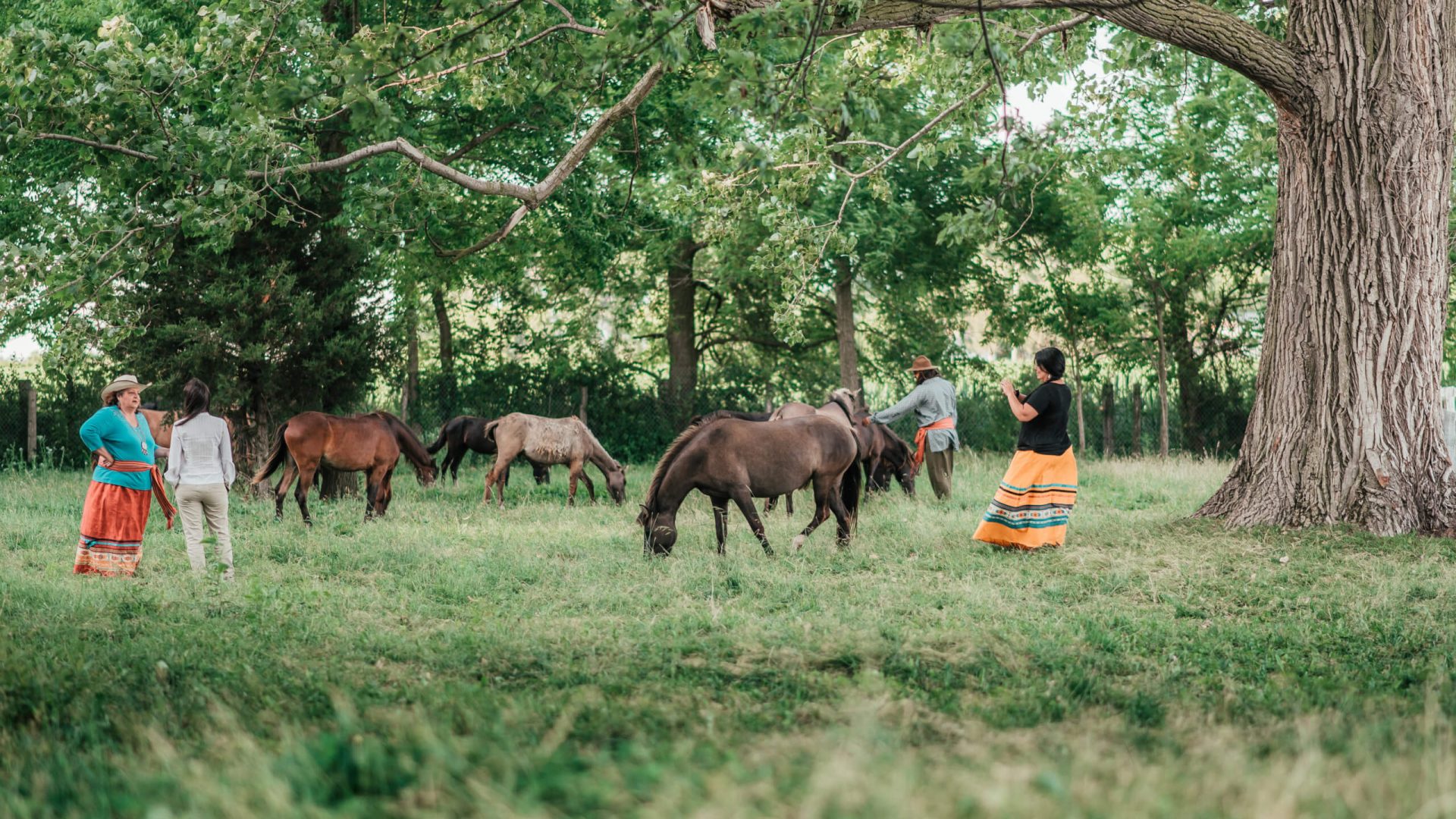
Near Ottawa, Canada, you can visit native horses that may predate the European’s arrival in North America, and symbolize a larger movement to call attention to overlooked and erased Indigenous histories.


Near Ottawa, Canada, you can visit native horses that may predate the European’s arrival in North America, and symbolize a larger movement to call attention to overlooked and erased Indigenous histories.
Most people who have taken a high school-level history class know that Spanish explorers brought horses (among other things, like disease and Catholicism) to North America when they arrived in the 14th century. The people already living on the continent quickly took to the animals, which proliferated faster than European exploration and quickly became central to many of their respective cultures and lifestyles.
But in Ottawa, Canada, First Nations people native to the region are rewriting that story. There, Ojibwe, Métis, Anishinaabe and other Indigenous people are laboring to restore the Ojibwe spirit horses, which they say were living on the continent before the Spanish brought theirs over. The small, thick-furred spirit horses, also called Lac La Croix Indian ponies, were hunted nearly to extinction by the Canadian government, who once viewed them as pests.
Maggie Downer, a Mohawk woman who works at the Mādahòkì Farm, an Indigenous farm and event space, teaches guests about Indigenous culture. She described the horses as “four-legged ambassadors” of Indigenous people to the BBC. “This breed faced a lot of the [same] challenges that we did as Indigenous people,” said Downer. “They faced eradication. But horses are so resilient and have so much to teach us.”
It’s not just evidence from Indigenous oral traditions that are starting to paint a different picture from the ones we saw in our textbooks. Historical accounts and even DNA testing also support the stories from Dakota and Lakota elders of wild horses that had lived alongside their people since long before the Spanish brought horses from Europe to North America, although the subject is still being actively debated by historians and biologists alike.
That horses may have already been in North America when the Spanish arrived with their breeds at the end of the 15th century is a possibility. Herds of wild horses on the continent are well documented up until the most recent Ice Age, when most, if not all, were eradicated, about 15,000 years ago.
From there, Indigenous lore takes the story of horses in North America in a different direction than the one written into European history books. According to them, a hardy breed of wild horses survived the cold to live in harmony with the Ojibwe and other tribes. The spirit horses weren’t “owned” by the tribes in the sense that we might think of domesticated horse ownership, but the tribes would shelter and feed the horses during harsh winters, and in return, the horses would break up ice for fishing in the winter or pull toboggans loaded with supplies.
When settlers began establishing themselves in the area that’s now central Canada, they started slaughtering the wild spirit horses, which they decided were a health risk. By 1977, only four remained. Before they could be killed as well, four Ojibwe men took them from the island in Lac La Croix across the border to Minnesota. There, they were bred with Spanish Mustang, the start of a careful repopulating that has revived the spirit horses’ numbers to around 180.
To Trina Mather-Simard, an Ojibwe woman who operates Mādahòkì, there are clear parallels between the story of the spirit horses and that of her own people. First Nations people in Canada faced violence and systematic erasure at the hands of settlers but have maintained their way of life and people. Now, the spirit horses can help promote the history and culture of Indigenous people.
“I see a lot of [similarities] to our own story,” Mather-Simard said, “in a way that we can share easily, about their connection to the land, the displacement and the resilience; that they went down to only four of them and yet they’re still here.”
It’s easy to forget that our perception of a place is shaped not just by our own experiences, but also by the stories we’re told. The spirit horses are a reminder that we might not always have the whole story of a place, and that through the course of history, some people’s stories have been given greater weight than others. Conclusive DNA results may be able to determine the history of horses in North America. But whatever the conclusive results are doesn’t change the fact that Indigenous perspectives have been systematically ignored—and without it, our understanding of anywhere on colonized land is woefully incomplete.

Miyo McGinn is Adventure.com's US National Parks Correspondent and a freelance writer, fact-checker, and editor with bylines in Outside, Grist, and High Country News. When she's not on the road in her campervan, you can find her skiing, hiking, and swimming in the mountains and ocean near her home in Seattle, Washington.








Can't find what you're looking for? Try using these tags: